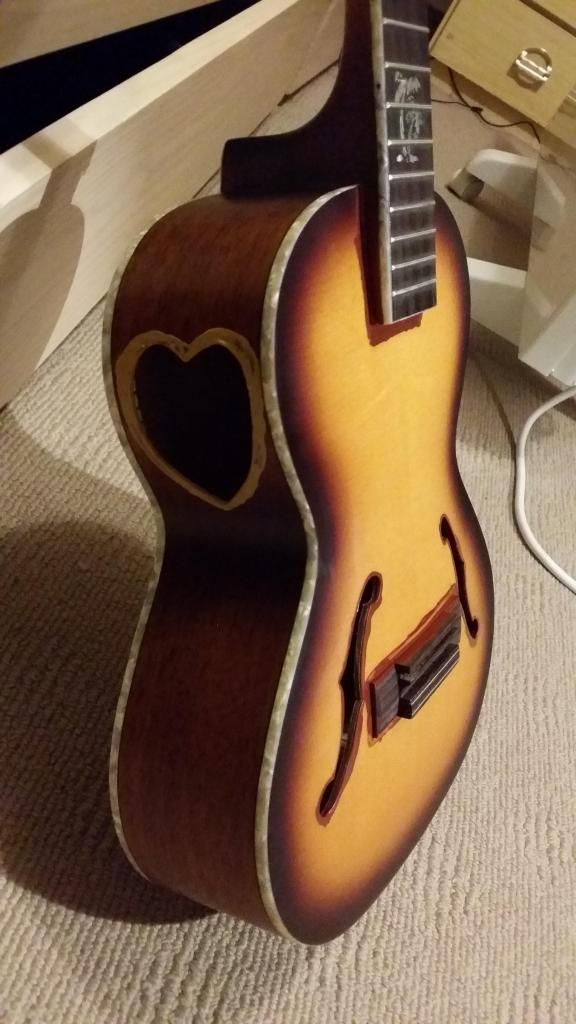spookelele
Well-known member
- Joined
- Dec 15, 2014
- Messages
- 1,258
- Reaction score
- 17
Just curious what it would do.
On the one hand, I would expect sound to come up toward me, which is what I want. But the physics and math of what that might do is melting my brain.
What I'm thinking I want to do, is order that Kala waterman. And if it's really not loud like it seems in the vids, cut a side port, and possibly make a plug for the top port if the new hole really messes up the helmholtz resonance.
I want a weather proof uke for backpacking that can take some battering strapped to my pack. I expect I'll be playing mostly by myself in the evenings, or maybe take it with on day hikes. But outdoors, a quiet uke is even quieter because of the space, so I'm thinking if I can throw the sound up toward me more, it would be almost as good as being louder.
Anyway, I was wondering if anyone has tried adding a side port, and what the experience was.
On the one hand, I would expect sound to come up toward me, which is what I want. But the physics and math of what that might do is melting my brain.
What I'm thinking I want to do, is order that Kala waterman. And if it's really not loud like it seems in the vids, cut a side port, and possibly make a plug for the top port if the new hole really messes up the helmholtz resonance.
I want a weather proof uke for backpacking that can take some battering strapped to my pack. I expect I'll be playing mostly by myself in the evenings, or maybe take it with on day hikes. But outdoors, a quiet uke is even quieter because of the space, so I'm thinking if I can throw the sound up toward me more, it would be almost as good as being louder.
Anyway, I was wondering if anyone has tried adding a side port, and what the experience was.
Last edited:

